The washing machine is noisy during the spin cycle - what should I do?
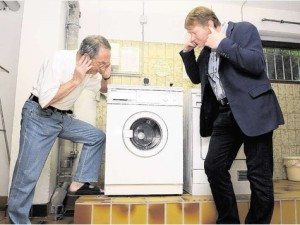 If the washing machine buzzes during spinning, then you definitely need to understand why this is happening? It’s possible that you simply purchased a too noisy model of the washing machine, or perhaps it’s a serious malfunction, which in the end will lead to a breakdown of the household appliance. In any case, it’s worth sorting out and taking measures to eliminate noise, and we will try to talk about how to do this as part of the article.
If the washing machine buzzes during spinning, then you definitely need to understand why this is happening? It’s possible that you simply purchased a too noisy model of the washing machine, or perhaps it’s a serious malfunction, which in the end will lead to a breakdown of the household appliance. In any case, it’s worth sorting out and taking measures to eliminate noise, and we will try to talk about how to do this as part of the article.
Typical Causes of Washing Machine Noise
The washing machine is relatively simple. Experts have experimentally identified several main causes of machine noise during spin cycle caused by breakdowns. We list these reasons.
- The bolts for transporting the machine have not been removed from the tank mounts.
- Drum drive bearings are damaged.
- Stuck objects in the space between the walls of the tank and the drum.
- Loose pulley, drum drive system.
- Loose tank counterweights.
- The rubber seal on the manhole cover is not sized.
- The washing machine is not installed correctly.
Note! Be sure to note at what point there is a lot of noise. At the beginning of the start of the washing program, at the beginning of the spin program or during the draining process - this is very important for proper diagnosis.
Description of the causes of noise and ways to eliminate it
The reasons, features and nature of the noise of the drum of the washing machine are specific in each case. It all depends on the model of the washing machine, on the nature of the breakdown, the degree of wear of its parts, and the like. Therefore, we do not guarantee that, according to our description, you will be able to 100% diagnose the cause of the breakdown. In doubtful cases it is better to consult a specialist.
Stuck objects in the space between the walls of the tank and the drum. According to experts and consumer surveys, this is the most common cause of loud noise emitted by the drum during the spin cycle. When we, without hesitation, throw things into the drum of the machine, in whose pockets there is a trifle, paper clips, pins and other small objects, there is a high risk of these objects getting into the tank of the washing machine. What is this fraught with?
At low speeds, the washing machine practically does not vibrate, and small objects lie quietly in their tank, not in contact with a rotating drum. But during the spin cycle, the machine begins to vibrate violently and small objects begin to bounce and, in the end, get stuck between the tank wall and the moving parts of the machine. As a result, the moving parts begin to whistle, creak and make other sounds.
To get to the objects that got into the tank, you need to unscrew the ten, put your hand into the tank and pull out everything that got there, the problem will be solved.
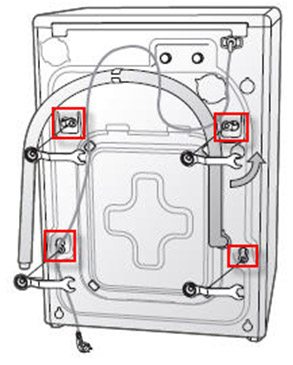 The bolts for transporting the machine have not been removed from the tank mounts. A gross but common mistake made by washing machine installers. The fact is that for more gentle transportation of the machine, the manufacturer has provided special fasteners that fix the shock spring of the drum. If these fasteners are not removed, then when the program starts, the drum of the washing machine will rotate with a loud knock. The problem is solved by unscrewing four fixing bolts located closer to the middle of the rear wall of the machine.
The bolts for transporting the machine have not been removed from the tank mounts. A gross but common mistake made by washing machine installers. The fact is that for more gentle transportation of the machine, the manufacturer has provided special fasteners that fix the shock spring of the drum. If these fasteners are not removed, then when the program starts, the drum of the washing machine will rotate with a loud knock. The problem is solved by unscrewing four fixing bolts located closer to the middle of the rear wall of the machine.
Drum drive bearings are damaged. The moving parts of the washing machine are equipped with several bearings. If one of the bearings collapses, this will result in a loud noise, especially during intensive work of the washing machine. How to identify bearing failure? Disconnect the washing machine from the mains, put your hand through the hatch and turn the drum clockwise and then counterclockwise. If the drum cracks and knocks during rotation, then the problem is in the bearing.
You can read how to change bearings in a washing machine correctly. here. But it’s better to entrust this work to professionals, especially if you have never repaired household appliances with your own hands.
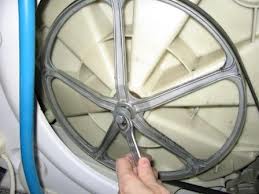 Loose pulley, drum drive system. To determine the problem with the pulley, you must run the washing machine in test mode. In this case, the drum will rotate, slowly making a dozen revolutions in one direction and a dozen revolutions. At this point, you need to listen to the machine, if clicks are heard, this is an occasion to check the drum pulley. To correct it, you will need to remove the back wall of the machine and, armed with a suitable tool, tighten the pulley fixing nut.
Loose pulley, drum drive system. To determine the problem with the pulley, you must run the washing machine in test mode. In this case, the drum will rotate, slowly making a dozen revolutions in one direction and a dozen revolutions. At this point, you need to listen to the machine, if clicks are heard, this is an occasion to check the drum pulley. To correct it, you will need to remove the back wall of the machine and, armed with a suitable tool, tighten the pulley fixing nut.
Loose machine counterweights. The counterweights located around the tank of the washing machine serve to dampen the centrifugal force, which inevitably should swing it strongly. Typically, problems with counterweights occur after a very long time using the machine or as a result of factory defects. To fix the problem, tighten all loose bolts holding the counterweights together. To do this, you have to remove the back wall of the washing machine, see how to better do this Dismantling the washing machine.
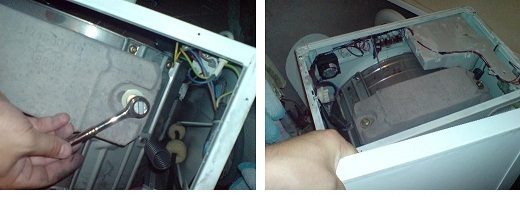
The washing machine is not installed correctly. In this case, we mean the placement of the machine on the floor, rather than its connection to the water supply and sewage. With the fast rotation of the drum (800-1000 rpm), the centrifugal force naturally tries to create an imbalance. If the machine is not installed at a level on an unreliable, deflection floor, this will result in:
- to the knock of the drum;
- strong vibration;
- swinging the housing of the washing machine.
The problem is solved by strengthening the floor and installing the machine strictly in level. To set the machine in level, it is not necessary to have a perfectly flat floor. It is only necessary to unscrew the legs of the “washer” so that the body stands on the level, for this you will have to sweat a little, but it's worth it.
The rubber seal on the manhole cover is not sized. If during the rotation of the drum a characteristic creaking or whistling sound is heard, and after washing, rubber shavings are visible on its walls and on the manhole cover - the problem is in the sealing gum of the manhole. Unfortunately, the assembly of some budget models of washing machines leaves much to be desired and the gum - this is probably the last thing that the collectors pay attention to.
The problem is solved easily. It is necessary to insert between the sealing rubber of the drum and the front wall of the machine, a piece of sandpaper and start the program without washing. The emery cloth will even out the gum in 20-30 minutes, as you need, and you just have to pull it out and remove the rubber shavings from the drum by running an additional rinse program and cleaning the filter.
Note! If a strong extraneous sound is heard while draining water from the drum of the machine, the problem may be hidden in the drain pump.
Read about how to change it yourself in the article. Replacing the drain pump.
The machine makes a lot of noise at the time of spinning, maybe it’s not about a breakdown?
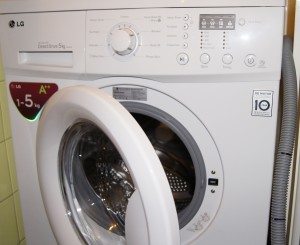 If the “washer” immediately after purchase and installation began to make a lot of noise in the spin cycle, this may be due to the factory characteristics of this model. In other words, the noise level at the most intensive stage of the “washing machine” is laid down by its manufacturer. Therefore, if a strong noise has arisen in the new washing machine, examine its passport. In the passport, the manufacturer often indicates the noise level, measured in dB, which the machine publishes during the most intensive work.
If the “washer” immediately after purchase and installation began to make a lot of noise in the spin cycle, this may be due to the factory characteristics of this model. In other words, the noise level at the most intensive stage of the “washing machine” is laid down by its manufacturer. Therefore, if a strong noise has arisen in the new washing machine, examine its passport. In the passport, the manufacturer often indicates the noise level, measured in dB, which the machine publishes during the most intensive work.
In this case, the question arises, even if the washing machine is noisy during the spin cycle and the noise level is indicated by the manufacturer in the passport, say 75 dB, how do we know that our machine reproduces sound of the same strength. Indeed, it is possible to accurately measure the level of noise reproduced by the machine only with the help of a special device - a sound level meter. If you have the opportunity to use it, then it’s good, but most often the average housewife has no access to such equipment.And what to do in this case?
Important! Inexpensive Chinese sound level meter can be ordered in the online store. By the way, he can later come in handy "in a showdown" with noisy neighbors who like to listen to loud music at 2 a.m.
The easiest way to measure the noise level of the machine in the so-called associative way. The Internet provides many examples of common, well-known sounds with data on their strength in dB. For example, the sound of a typewriter is 50 dB (distance 1 m), the train in the subway is 95 dB (distance 7 m), the sound of a jackhammer is 120 dB (distance 1 m) and so on. Approximately compare the strength of the sounds you know with the noise emitted by the washing machine and you will understand whether the numerical values indicated in the passport correspond to reality or not.
Besides Be sure to pay attention to the nature of the sound. If a strong monotonous noise is interrupted by a clang, a metal rattle or a knock, then most likely there is a malfunction in the washing machine and measures must be taken to eliminate it.
How to continue to prevent the malfunction causing noise?
In order for the machine to serve for a long time and periodically there are no “noisy malfunctions” in it, the rules for its operation must be observed. The more carefully and prudently you will treat your "home assistant", the less often you will encounter troubles of this kind. What operating rules are we talking about?
- Do not shove more laundry into the drum of the machine than provided by its design.
- To the wear and damage of machine parts (especially sealing rubber bands), its too frequent use (several times a day). The machine between washings should have time to dry.
- Use less often washing programs that wash things in very hot water and at high speeds.
- Remove dirt from the drain filter as often as possible.
- Before washing items, check your pockets for foreign objects, turn things around before sending them to the drum and use laundry bags.
- Add water softeners before washing to prevent limescale deposits on the elements of the washing machine.
To summarize, we note that if your machine suddenly began to rattle during the spin cycle and restarting the washing program does not solve the problem, most likely there is a breakdown that needs to be found and fixed. And valuable expert advice will help us with this. Have a good repair!
Interesting:
10 reader comments
Add a comment Cancel reply
Headings
Washing machine repair


For buyers
For users

Dishwasher



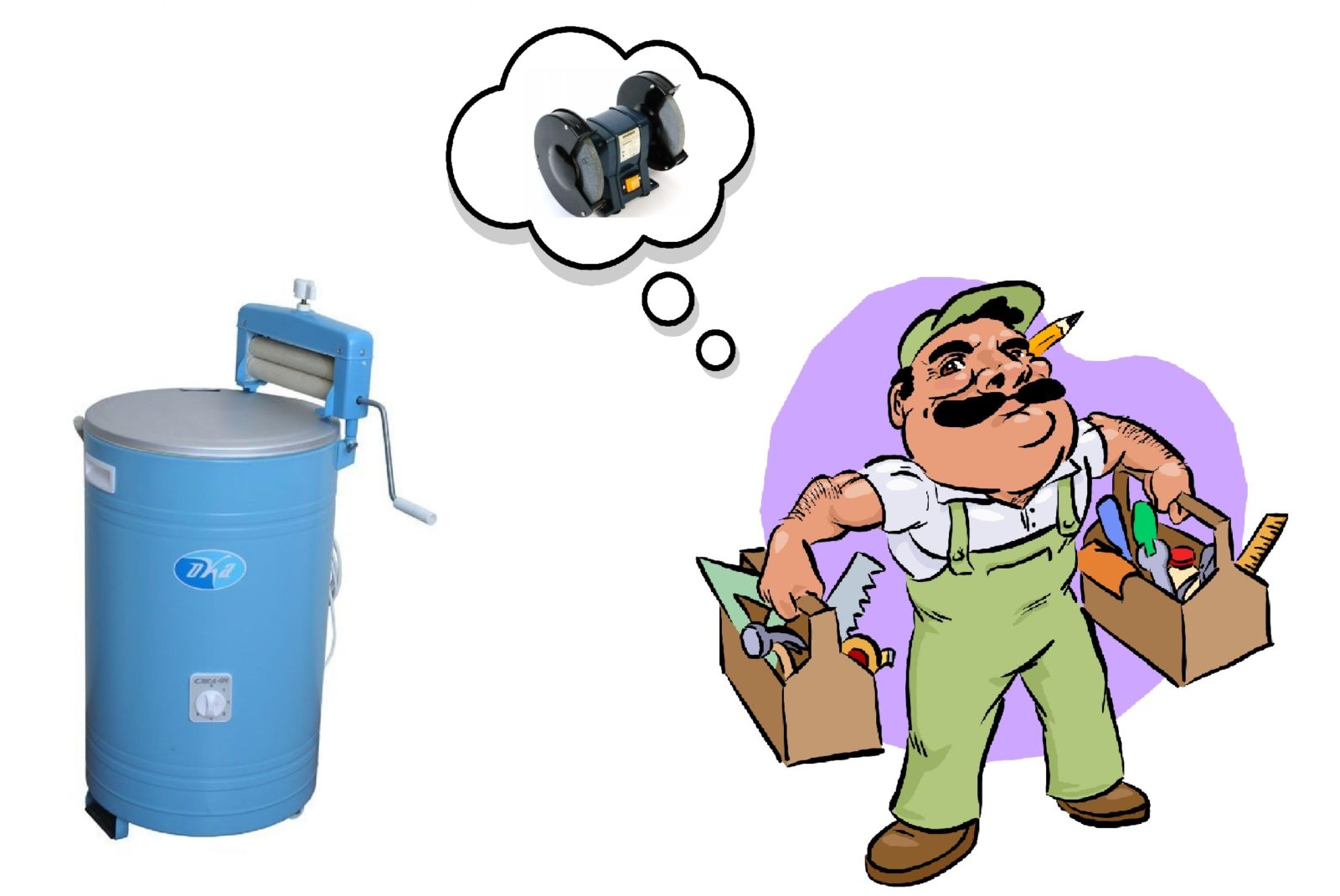
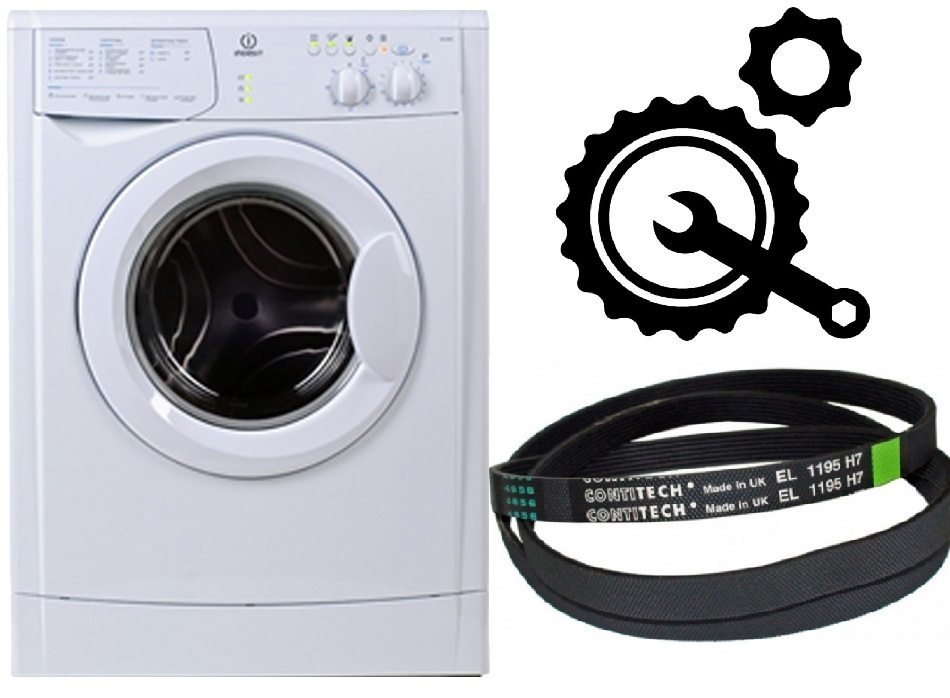

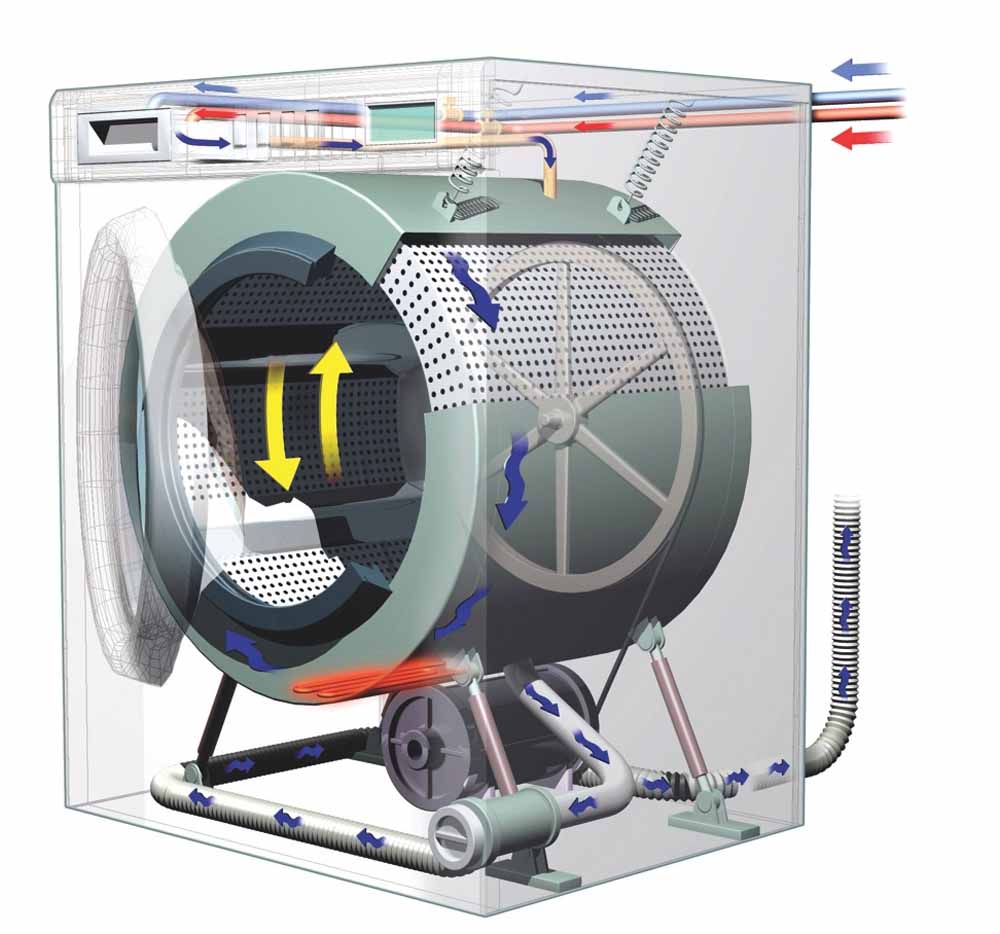











Thanks, useful information!
Thanks for the information. But there is a slightly more convenient way - to completely remove the tank from the housing of the washing machine. I think it's more convenient
Thank you
Hello, please tell me why at the Grand washing machine after a full drain the washing will end without spin, what should I do?
Thanks, very helpful.
When spinning, the letters UE were displayed on the board, what is it?
Thank you, a very necessary guide!
Hello, please tell me! What to do if the machine is buzzing? I do not know how to explain it. This was not the case before. I began to notice this when I erase 60 degrees or 90 degrees.
Thanks for the info, I will be curled up !!!!))
Thanks for the info